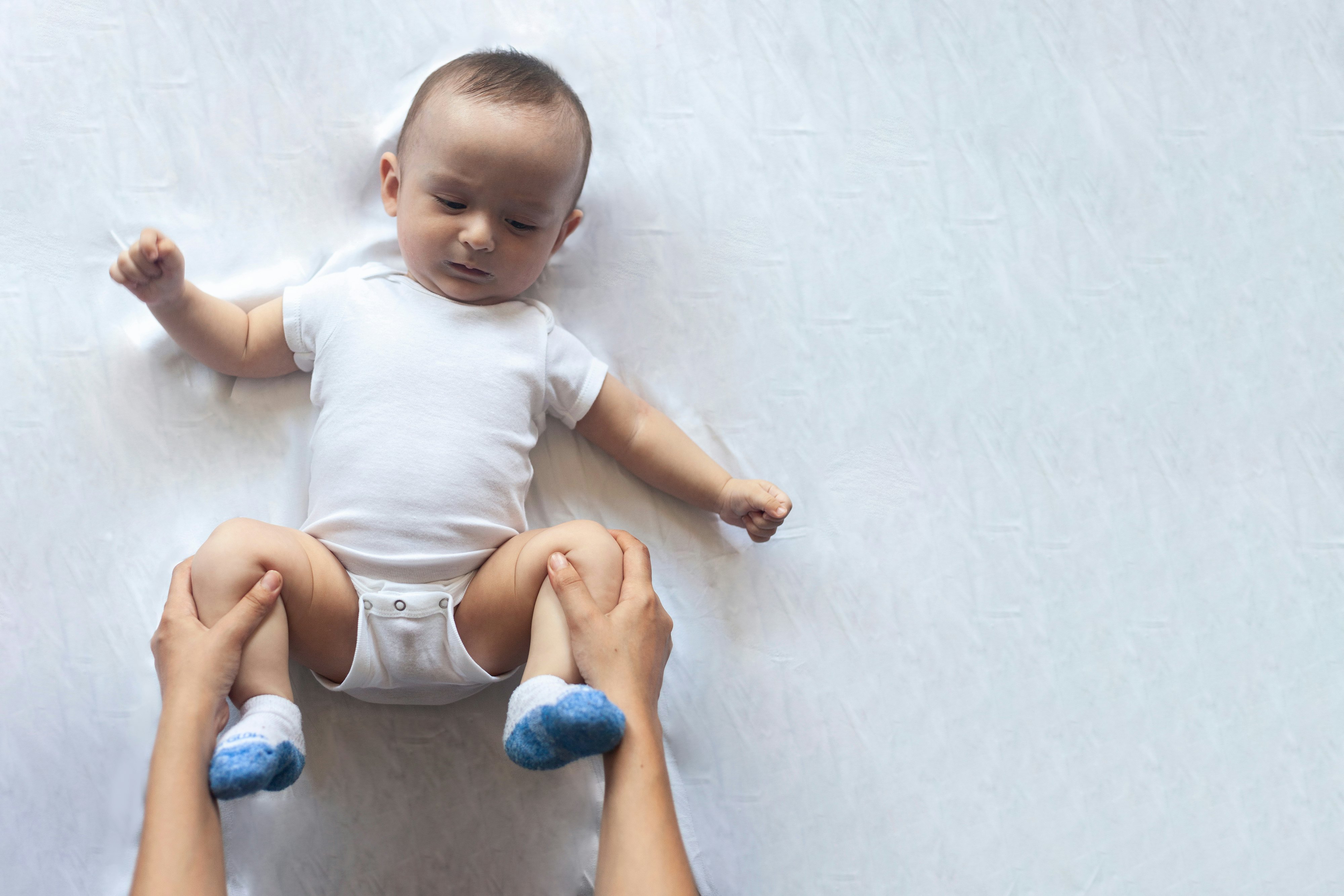Walking tendencies could be absent or the legs might not be straight or could be a little bent. However common symptoms of DDH include the leg on the side of the dislocated hip appearing shorter or turning outward uneven folds in the skin of the thigh or buttocks and the space between the legs seeming wider than normal.
 Hip Dysplasia In Toddlers Up To 63 Off In Stock
Hip Dysplasia In Toddlers Up To 63 Off In Stock
Ursachen der Hüftdysplasie.
Hip dysplasia baby symptoms. Many symptoms of DDH are symptoms similar to other hip problems. Die Hüftdysplasie allein verursacht zunächst keine Beschwerden. Like many other conditions hip dysplasia has a wide range of severity from mild loose joints to severe complete dislocation.
Uneven skin folds of buttocks or thigh. Dysplasie tritt bei jedem 60. An estimated 1 in every 100 babies is treated for hip dysplasia in some form.
Baby aufund tritt am häufigsten mit der linken Hüfte bei angeborener Dysplasie auf häufiger bei Mädchen weil die Störung erblich ist. Wird sie aber nicht rechtzeitig erkannt können Schäden an Hüftpfanne und -kopf wie eine Hüftarthrose im späteren Lebensalter oder eine Hüftluxation entstehen. Symptoms can occur a bit differently in each baby.
But newborn hip dysplasia might be present if your child fails to show such signs. What Is Developmental Dysplasia of Hips DDH in Infant. Wenn der Zustand vorliegt und ignoriert wird kann er sich im Laufe der Jahre verschlimmern und für Ihr Kind extrem schmerzhaft werden.
Fortunately the condition does not cause any pain. A hip joint that clicks when its rotated uneven legs or skin creases near the buttocks late sitting or walking uneven walking. Symptoms present differently from child to child.
Hüftdysplasie Definition Hüftdysplasie ist eine angeborene Fehlbildung die dazu führt dass sich der Femurkopf allmählich aus der Hüftgelenkspfanne löst die ihn aufnehmen und im Inneren drehen soll. Es wird normalerweise empfohlen nach Hüftgelenksdysplasien in Ihrem Baby Ausschau zu halten insbesondere wenn er ein Jahr alt ist. The space between the legs may look wider than normal.
A painless but exaggerated waddling limp or leg length discrepancy are the most common findings after learning to walk. What are the symptoms of hip dysplasia in babies. Leg of your baby may appear to turn out more than normal.
If both hips are dislocated then limping with marked swayback may become noticeable after the child. Reduced movement on one side of the body. Common symptoms of DDH in infants may include.
The signs and symptoms of hip dysplasia can depend on age. Below are some of the common signs and symptoms of hip dysplasia in infants 3 4. The folds in the skin of the thigh or buttocks may appear uneven.
Signs of Hip Dysplasia If hip dysplasia is missed during the pediatric exam it can be harder to diagnose later in life. Lesen Sie über Ursachen Anzeichen Diagnose und Behandlung von Hüftgelenksdysplasie bei Säuglingen. Both the legs are of different lengths wherein the legon the affected side appears shorter Limited range of motion in the leg on the affected side causing a limp while walking Uneven skin folds or creases in the thigh or hips.
In milderen Fällen führt Dysplasie erst in der Pubertät zu Symptomen. Leg of your baby may look shorter on the side with the dislocation that makes your child to walk on their toes. Hip dysplasia is often referred to as Developmental Dysplasia of the Hip DDH.
The leg on the side of the dislocated hip may turn outward. Many babies with DDH are diagnosed during their first few months of life. Bei der Geburt verknöcherte der Kopf des Schenkelknochens des Babys nicht und der Kelch der ihn aufnahm war nicht.
The condition isnt painful and doesnt have obvious symptoms. Hip pain especially during the teenage years. Painful and stiff joints osteoarthritis With early diagnosis and treatment most children are able to develop normally and have a full range of movement in their hip.
Babies sometimes have one leg thats longer than the other and kids might have one hip thats less flexible than the other or limp. The leg may appear shorter on the side of the dislocated hip. Pain is normally not present in infants and young children with hip dysplasia but pain is the most common symptom of hip dysplasia during adolescence or as a young adult.
Here are some symptoms that infants with hip dysplasia may experience. Dieser Defekt ist auf eine abnormale Entwicklung des Coxo-Femoralgelenks in der intrauterinen Ära zurückzuführen. The leg on the side of the affected hip may appear shorter.
Without treatment DDH may lead to problems later in life including. In Verbindung stehende Artikel. Such signs including walking on tiptoed feet could all indicate a similar problem.

